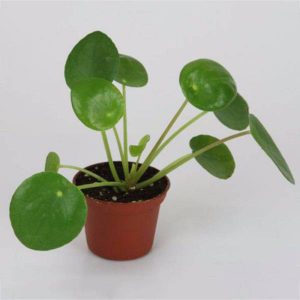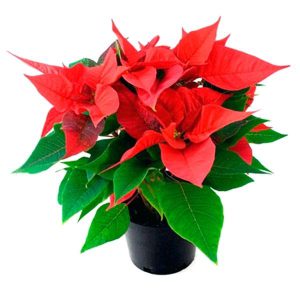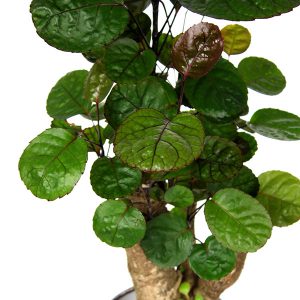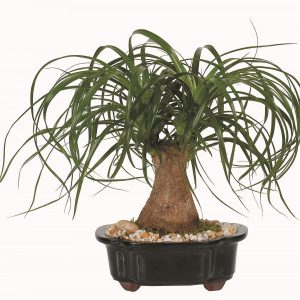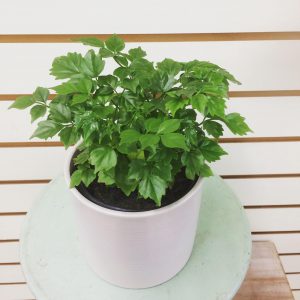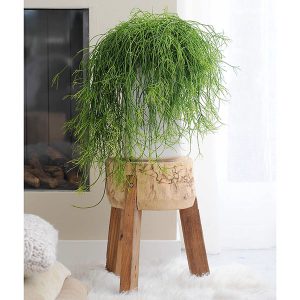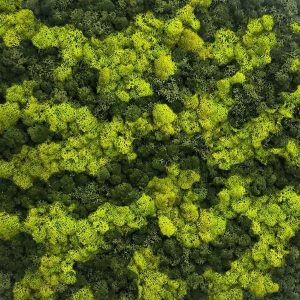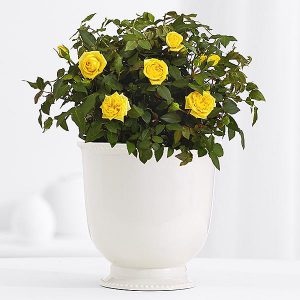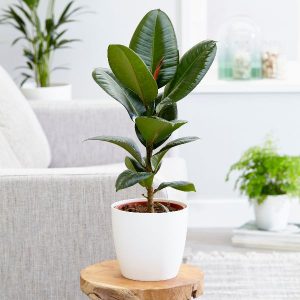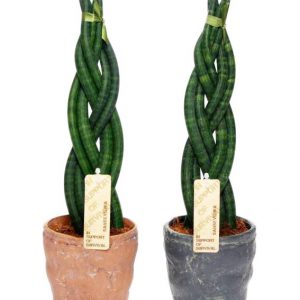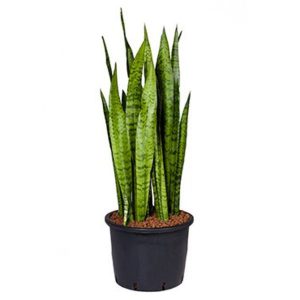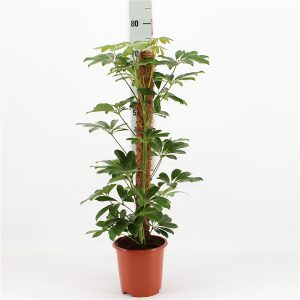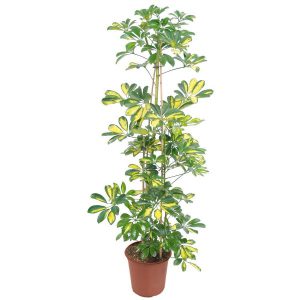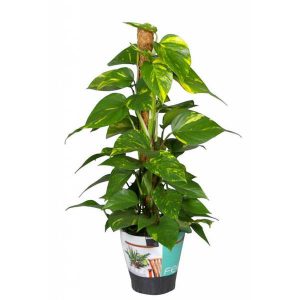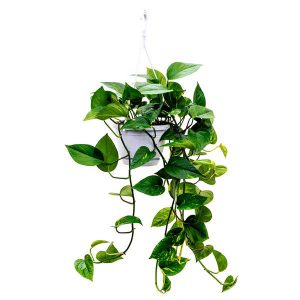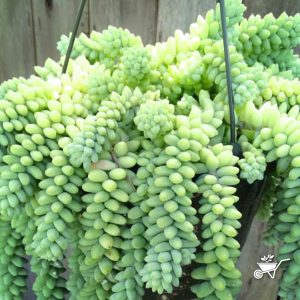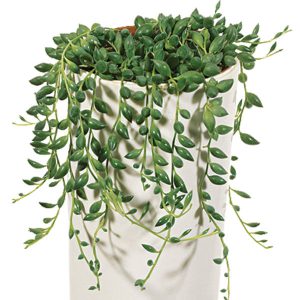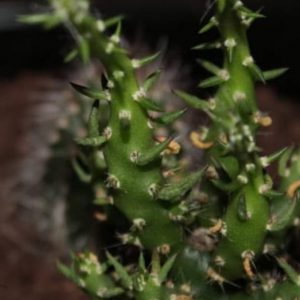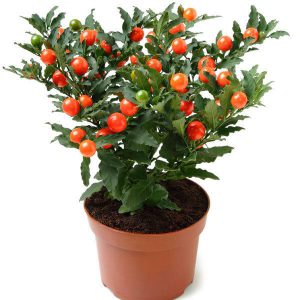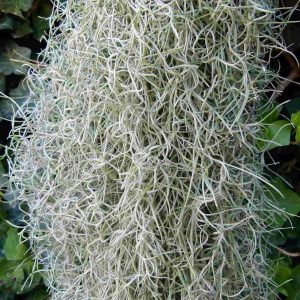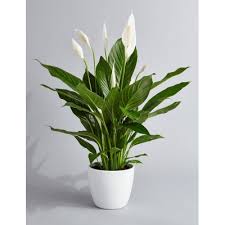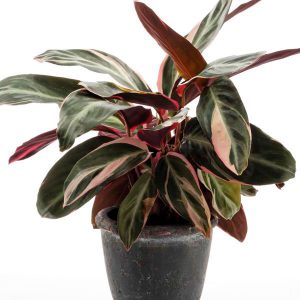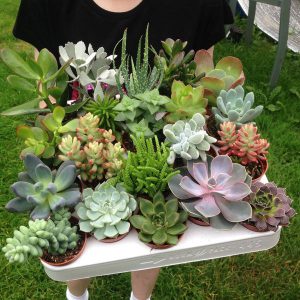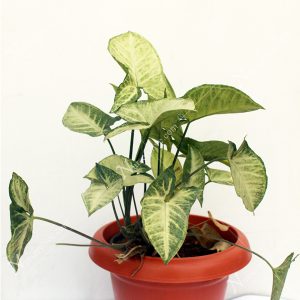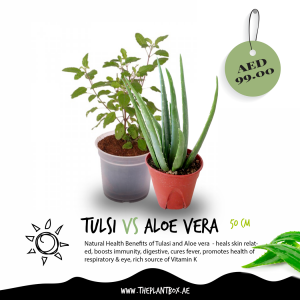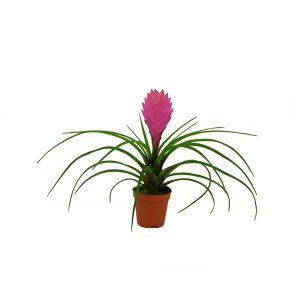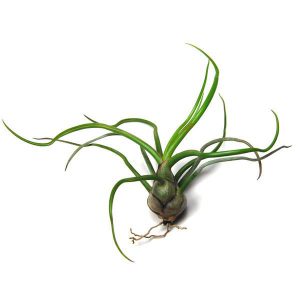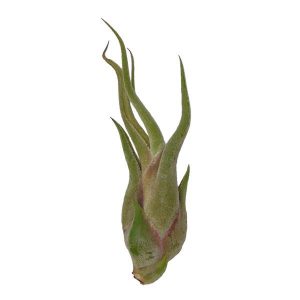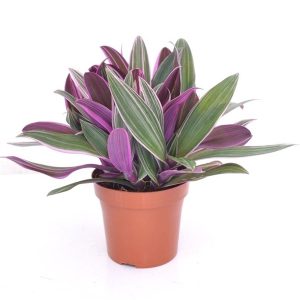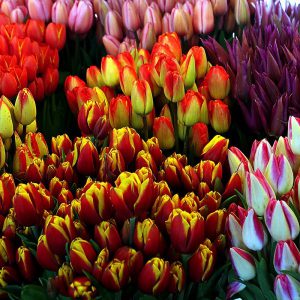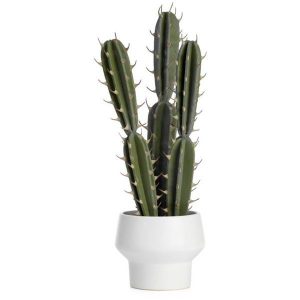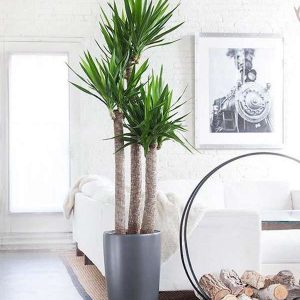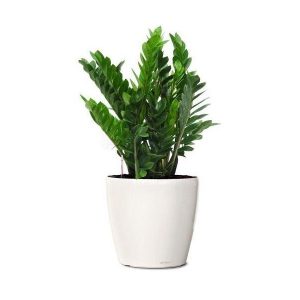Indoor Plants
Pilea Peperomioides
watering, once a week, depending on the season. On hot summer days they might need a bit more water than on colder days. What’s important is to not keep the soil wet, but let it dry out a bit in between waterings, but also don’t let it dry out completely, either. The plants in terracotta pots might need watering more often because the terracotta absorbs part of the water.
All my Pileas love a spot in front of a window where they get a lot of light, but almost no direct sunlight. This is where they grow best. In a spot where there’s more shade, they will do fine too, but the leaves might turn a darker green. Too much direct sunlight might scorch the leaves. I do rotate my plants a few times a week because the leaves grow in the direction o
AED 65.00Add to cart
Poinsetta plant
Water – Poinsettias like moist, but not wet, soil. When the top of the soil becomes dry, add room temperature water to the plant. Allow the water to drain through the pot when watering, and then discard any excess water in the saucer.
AED 20.00Read more
Polyscias Fabian
Light: Prefers moderate to bright, indirect light but can adapt to shade. Avoid direct sunlight.
Water: Water when the soil has become slightly dry at the top. Better to keep them slightly dry than to over water. Use soft water if possible.
Temperature: Likes things warm, so anything above 15°C, ideally 18-29°C.
Humidity: Prefers moderate to high humidity levels. Dry air may cause leaf drop. Use a pebble tray or water surround and mist regularly. Stand outside in warm summer rain or stand in the shower for a while.
Feed: Feed once a month with a balanced fertiliser during the growing period.
Height and Growth Rate: Ultimate height 1-2m. Slow growing once established.
Toxicity: May be considered toxic. Keep away from pets and children to be on the safe side.
Origin: Polynesia.
AED 180.00Add to cart
Ponytail palm (nolina palm)
- Use a fast draining soil, such as a cacti and succulent potting mix. If you have potting soil, sand, and perlite already on hand, you can create your own desert soil mixture: Simply mix 1 part potting soil, 1 part perlite, and 1 part sand.
- Select a pot that has a hole in the bottom, so that excess water can be drained off. Ponytail palms do not like to sit in moist soil for very long.
- Use a clay pot if possible; the porous material will absorb some of the water, drying out the soil more quickly (a good thing for cacti and succulents).
- Ponytail palms prefer to have as much light as possible, so place the plant in a bright location.
AED 335.00Add to cart
Radermachera sinica
For best growth, give your china doll plant a lot of bright (but indirect) sun. It needs at least 4-5 hours of sun per day, even indoors. If you don’t have a spot in your house that gets that much light, you should consider purchasing indoor grow lights to supplement.
When watering, be careful. Too little or too much can wreak havoc on your china doll plant. The soil should be kept moist, but the roots shouldn’t be allowed to sit in water. Water only when the top inch of the soil is dry to the touch.
If your plant develops brittle leaves that turn yellow, it not getting enough water. Too much water is indicated by black colored tips.
When new foliage is developing, watering can be slightly increased and decreased again once the plant has become dormant.
AED 40.00Add to cart
Rhipsalis Amelie
Rhipsalis does not thrive in direct sunlight. Exposure to afternoon sun can burn the leaves, turn them yellow, or lead to spotting. However, without sufficient sunlight, They will not bloom, and its growth can be stunted. Rhipsalis does best with morning sun and full shade in the afternoon. As Rhipsalis is commonly grown indoors, care must be given to the placement of the plants. They should be kept at least 20 inches (50 cm) away from windows that receive midday or afternoon sun. The glass in the windows can multiply the heat from the sun’s rays, causing sunburned leaves. Keep in mind that in its native environment, Rhipsalis is accustomed to receiving light that has been filtered through dense, overhanging tree branches. Picturing this environment can help you adjust your lighting accordingly.
Rhipsalis is not a drought-resistant plant, so regular watering is essential. Over-watering, however, can cause weak stems and rotted roots. Using a watering can may help you measure the amount of water you are providing. The size of the pot compared to the size of the plant, the humidity levels in the home, and the type of potting soil used can all affect the watering frequency. Rhipsalis seldom needs to be watered more than once a week. Check before watering by pressing your finger into the soil to a depth of half an inch. Postpone watering if the soil is moist. You can also use a moisture meter to help you determine whether it is time to water.
AED 125.00Add to cart
Rindeer moss (Preserved)
Provide your reindeer moss with good quality air. Reindeer moss does not grow roots, and draws minimal nourishment from host plants like trees. It depends on the air for almost all of its nutrients, and will not sustain itself in highly polluted areas.
Avoid allowing animals to nibble at your reindeer moss. Reindeer moss is a slow-growing lichen species that can take up to 30 years to regrow if the top layer is damaged.
Rosa plant
Caring for rose bushes is important to their overall health and vigor, especially when it comes to watering. Roses require at least an inch of water weekly throughout their growing season, beginning in spring or following spring planting. While overhead watering is suitable before the onset of new growth, it is often better to water these plants at the soil line using soaker hoses or similar means. Rose bushes are very susceptible to fungal diseases, such as black spot and powdery mildew, especially when their foliage is kept too wet.
AED 45.00Add to cart
Roubusta (Rubber Plant)
There are a number of Ficus elastica varieties grown successfully indoors which includes, “the most common one” F.elastica decora (has shiny leather type leaves which grow to a foot long), F.elastica robusta (has larger leaves than decora), F.elastica black prince or burgundy (has near black reddish leaves) and a selection of variegated types.
AED 195.00Add to cart
Sanseviera Twester
Sansevieria Twister
Family: Agavacee
Country of origin: plant originating from tropical regions in Africa
Blooming season: the plant blooms at the end of summer (but rarely)
History and curiosities: also called “snake plate” or “mother-in-law’s tongue”, this strong plant has leathery leaves which grow with slight undulations.
AED 190.00Read more
Sanseviera Zeylanica
Sansevierias are some of the toughest plants you can find. Whether indoors, in your garden or on your balcony, these spiky beauties can put up with almost anything. They’re easy as can be, but there are a few things you should know. This post is all about Sansevieria, aka Snake Plant, care. You’ll see how low maintenance they really are!
AED 115.00Add to cart
Schefflera Combacta
The schefflera houseplant is a popular plant and comes in many varieties. The most well known are the umbrella tree and the dwarf umbrella tree. One of the reasons the plant is popular is because schefflera plant care is so easy, but, while schefflera care is easy, the plant does need to be cared for. Keep reading to learn more about growing schefflera and keeping it healthy and lush
AED 140.00Add to cart
Schefflera Combacta Gold
The schefflera houseplant is a popular plant and comes in many varieties. The most well known are the umbrella tree and the dwarf umbrella tree. One of the reasons the plant is popular is because schefflera plant care is so easy, but, while schefflera care is easy, the plant does need to be cared for. Keep reading to learn more about growing schefflera and keeping it healthy and lush
AED 125.00Add to cart
Scindapsus aureus
Scindapsus aureus is the scientific name of the “money plant” grown in homes in Asia. Epipremnum aureum is another scientific name that many consider synonymous. Besides “money plant,” other commonly used names for this plant are “pothos,” “silver vine,” “devil’s ivy,” “and “Solomon Islands ivy.”
This plant is native to Southeastern Asia and New Guinea. It belongs to the Araceae family, which contains more than 100 genera.
The plant is called a money plant because its leaves (round, flat, heart-shaped, dark green, and plump) resemble coins. It is a perennial and may be grown as either a trailer or a climber. Young plants bear three- to four-inch-long heart-shaped leaves. This plant is grown mainly indoors.
AED 55.00Add to cart
Scindapsus hanging
Native range extends from Northern Australia through Malesia and Indochina into China, Japan and India. The species have become naturalised in tropical and sub-tropical forests worldwide, where it has caused severe ecological damage in some cases. Scindapsus aureus can become a highly invasive species when introduced into tropical countries where it is not native. Having no natural enemies, it completely overgrows the forest floor as well as the trunks of trees, causing severe ecological disruption.
AED 30.00Add to cart
Sedum borrito hanging
he common name burrito sedum refers to Sedum morganianum “Burrito,” a cultivar of sedum also known as burro’s tail and grown for its long, trailing stems and plump, densely packed foliage. It cannot tolerate frost and only survives outdoors above U.S. Department of Agriculture plant hardiness zone 10b, so it is best grown as a houseplant in cooler areas. Despite their frost tenderness, burrito sedums are relatively hardy and thrive with little hands-on care. However, they must be regularly watered during the active growing season and provided with suitable levels of light and warmth to prosper.
AED 145.00Add to cart
Senecio rowleyanus
If you’re looking for an easy succulent to grow indoors, opt for the string of beads (Senecio rowleyanus) plant. In addition to its carefree growth habit, this interesting houseplant can provide a unique focal point in the home. Sprawling over the edges of containers or hanging baskets, the string of beads plant resembles a beaded necklace with its fleshy green, pea-like foliage. Learn more about growing string of beads houseplant so you can also enjoy its unique characteristics and ease of care
AED 110.00Read more
Solanum pseudocapsicum
Very white or whitish small star shaped flowers bloom during summer, followed by berries that look just like small tomatoes. In fact they may even taste similar to tomatoes, but they’re toxic when eaten.
Berries begin green in color, then turn yellowish, orange and red, and are the main attraction rather than the tiny flowers. Flowers last until just before winter and the berries can last for months after the festive holiday period
AED 35.00Read more
Spanish Moss – (Air plant )
The name “Spanish moss” actually originated as “Spanish beard”. Native American tribal people called it “itla-okla”, which meant “tree hair”. Some French thought that it resembled a conquistador’s long beard and began calling it “Barbe Espagnol”, or Spanish beard. While the Spaniards retaliated by referring to it as “Cabello Frances”, or French Hair, it never caught on.
Over time, Spanish beard became Spanish moss, what it’s most commonly known as today. The Polynesians occasionally refer to Spanish moss as “Kali’s hair”, and throughout its natural environment it’s still called “tree hair”, simply because it resembles hair so much!
AED 125.00Read more
Spathiphyllum(Peace Lilly)
A long-time favorite of those with a green-thumb and even those without, Spathiphyllum, commonly known as the peace lily, is an adaptable and low-maintenance houseplant. Peace lilies are not true lilies (Lilium spp.) at all, but rather a member of the Araceae family. Its flowers resemble those of the calla lily (both plants belong to the same family) and is the reason for its name. The showy part of the flower features a white, hoodlike sheath (known as a spathe) which resembles a white flag of surrender.
There are a wide variety of sizes and types of peace lilies. Most serve as floor plants since they can reach three feet tall and grow wide with big, bold leaves. Mauna loa supreme (a Spathiphyllum hybrid) is the standard midsize type. It grows up to four feet tall and features bronze-green foliage with an abundance of large, cupped spathes.
AED 35.00Add to cart
Stromanthe sanguinea trioster
Growing Stromanthe sanguine gives you a super attractive houseplant that can be used as a Christmas gift plant. Foliage of this plant is of red, white and green coloration. A relative of the popular prayer plant, stromanthe houseplants are sometimes thought to be difficult to maintain. Following a few basics of stromanthe plant care allows you to demonstrate your green thumb and keep the attractive specimen growing and thriving year round.
When growing the Stromanthe ‘Triostar’ plant outside, place it in a shaded area with morning sun or in a total shaded area if possible. The plant can take more sun in cooler areas. Now that you’ve learned how to grow a stromanthe, give it a try, indoors or out
AED 80.00Read more
Succulent collection
- Unique collection is hand pick to ensure there is no 2-alike, plants may vary from pictures shown as succulents are selected based on season, size, health and readiness
- Succulents come in 2 in. square pots fully rooted in soil, plant measurement will vary as different species grow in different ways: for example, some grow wider, shorter, taller, trailing, etc.
- All succulent packs are carefully packed in shop Succulents retail packaging making these easy to gift
AED 140.00Add to cart
syngonium podophyllum
When left unpruned, its vines can grow to be about six feet long and are lovely when trained to climb or allowed to cascade over the sides of a hanging basket. In this article, we will discuss the growing, care and use of Syngonium podophyllum.
AED 30.00Add to cart
Thulsi Vs Aloe Vera
AED 150.00 Original price was: AED 150.00.AED 99.00Current price is: AED 99.00.Add to cart
Thulsi Vs Aloe Vera
Natural Health Benefits of Tulasi and Aloe vera – heals skin related, boosts immunity, digestive, cures fever, promotes health of respiratory &
AED 150.00 Original price was: AED 150.00.AED 99.00Current price is: AED 99.00.Add to cart
Tillandcyanea pink
The Pink Quill Plant, or Tillandsia cyanea, is one sweet little plant. Although these are much smaller than the other commonly sold bromeliads, like the Aechmea that I showcased last week, the size of their flower makes up for that. It’s not only a very easy and tough houseplant, but it handles dry conditions like a champ. This is all about Pink Quill Plant care and the things you need to know to keep it keepin’ on.
In case you didn’t know, tillandsia is the genus for air plants. What makes this bromeliad so cool, along with its big bloom in relation to the size of the plant, is the fact that it’s sold as an air plant as well as in a pot. It does equally well growing either way and I’ve even seen it in large (2′) kissing ball form.
AED 45.00Add to cart
Tillandsia bulbosana – (Air plant )
The Tillandsia Bulbosa is also one of the easiest air plants to care for. It does not require any soakings, only mistings 2-3 times a week, more often in hot and dry conditions like that of in the desert. In the summer months, when it is a bit warmer, the Bulbosa can grow quite rapidly.
It also does extremely well in low light conditions as well as that of bright diffused or indirect light
The Tillandsia Bulbosa is native to Guatemala, Belize and Central America.
Perfectly paired with Himmeli: The DimonThed and The Heart, and with all of the Wall Sconces.
AED 40.00Read more
Tillandsia caput – medusae (Air plant)
Anyone who dares to adapt to its unconventional attitude, will easily meet the few requirements of this tillandsia, even as a debutant to hobby gardening. This care guide explains practically all the relevant details from the ideal location to the correct way of tying up, watering properly, fertilizing, overwintering and propagating.
Its distinctive characteristics include the fact that a Tillandsia caput-medusae acts as an ant plant in the wild. This does not mean that ants support its propagation by transporting seeds. In point of fact, the Tillandsia establishes a symbiotic cohabitation with ants by offering them a place of retreat. In return, the insects make a contribution to care by repelling pests and providing a natural fertilizer by the means of their faces.
AED 40.00Read more
Tradescantia spathacea sitara
Moses in the Cradle is a popular house plant, related to the Wandering Jew plant. You’ll find that it’s just as easy to grow.
Dark-green, lance-shaped leaves with purplish-red undersides make this a beautiful house plant year-round. You can keep your plant indoors. But if you move it outdoors for the summer, keep it shaded from direct sun. Also, check the soil every couple days so that it doesn’t dry out.
Pot it in a small decorative container for a stunning table accent. A newer variety, Rhoea discolor ‘Variegata’ is even more spectacular, with striped foliage in burgundy, pink, green and cream.
It blooms any time of year. Small, white, 3-petaled flowers grow in the leaf axils, nestled in the boat-shaped leaves, giving this plant its common names, Moses in the Cradle, Moses in a Boat and Boat Lily.
Let the sun shine in. Grow your plant in bright light year-round for good foliage color and flowers. It will tolerate lower light, but the leaves will be more green than purple.
AED 35.00Read more
Tulip
Tulip flowers are usually cup-shaped with three petals and three sepals. There’s a tulip for every setting, from small “species” tulips in naturalized woodland areas to larger tulips that fit formal garden plantings from beds to borders. The upright flowers may be single or double, and vary in shape from simple cups, bowls, and goblets to more complex forms. Height ranges from 6 inches to 2 feet. One tulip grows on each stem, with two to six broad leaves per plant.
AED 55.00Read more
white spiked cactus
Cacti are great plants for busy people who want something to sit on a sunny windowsill, but don’t want to spend too much time looking after them.This beautifully rounded, glossy green cactus has distinct deep ribs running down the plant, with clutches of golden yellow radial spines protruding out. Native to Mexico this cactus in it’s natural habitat can grow to a large plant with funnel shaped yellow flowers from mid-summer but over here it is unlikely to flower, and really it is an attactive plant just as it is. Please note that the pot in the photograph is not supplied with the plant (which is sent out in a black plastic pot). They do however make excellent potted plants, and if you wish to pot yours up, we do have a wide range of pots on our website to choose from.
AED 0.00Read more
Yucca Elephantipes
The Yucca plant is one garden and houseplant which will be quite happy with as much sun as you can give it. Indoors a South facing window would be the first choice. Whatever your light situation try to provide as much as possible.
Less bright conditions will slow growth considerably (which may be an advantage) however very shady and dark spots must be avoided to maintain a healthy looking plant.
Water your Yucca liberally during warmer months of the year. Like all plants it’s impossible to give rigid watering intervals, but if conditions are exceptional (bright, warm etc) you could be looking to do this as frequently as once a week or more. The soil should dry out a little between watering’s. In Winter a lot less water is required.
AED 320.00Add to cart
Zamioculcas zamiifolia
Zamioculcas is a genus of flowering plant in the family Araceae, containing the single species Zamioculcas zamiifolia. It is a tropical perennial plant native to eastern Africa, from Kenya south to northeastern South Africa.
Bright light is good but not essential. The zamioculcas zamiifolia grows fine with low levels of light, but it’s best to avoid direct sunlight.
Allow the soil to become dry at the top to the touch between watering and do not over water. It’s best to water this plant less than too much because over-watering can cause stem and rhizome rot.
Most well draining potting mixes will suffice that contains a high amount of perlite or sand within the mix (you can add more perlite or sand if needed to a mix that is bought). Good drainage holes at the bottom of the pot is essential.
AED 45.00Add to cart

